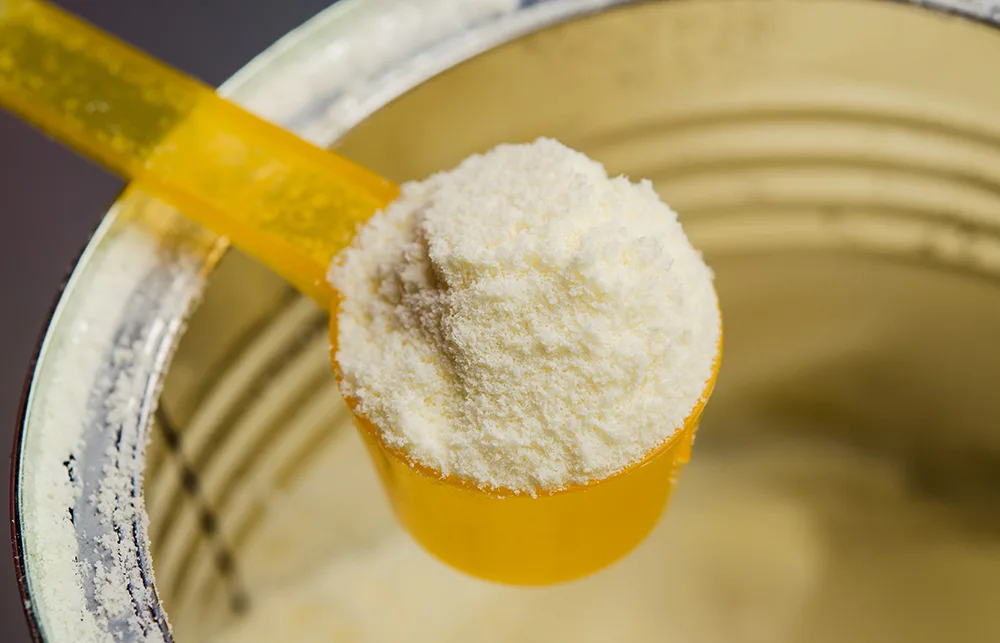Fears have surfaced after a recent study found ‘potentially toxic’ nanoparticles present in off-the-shelf Australian baby formulas.
A study conducted by a team at Arizona State University found tiny, needle-like hydroxyapatite nanoparticles in Nestle’s NAN HA 1 Gold and Nature’s Way Kids Smart 1 formula, The Sydney Morning Herald reports.
While regular hydroxyapatite occurs naturally in bones, the needle-shaped, nano-sized version is of concern to some health experts.
Friends of the Earth, who commissioned the research, said Nano-hydroxyapatite was banned from use in infant formula in Australia and can cause cell death in the liver and kidneys of rats.
“Friends of the Earth are calling for an immediate recall of all affected brands – and for our food regulator – Food Standards Australia New Zealand (FSANZ) – to immediately commission testing of all infant formula to ascertain what other brands contain hydroxyapatite or other unapproved and potentially harmful nanoparticles,” Friends of the Earth said in a statement.
RELATED: Brisbane Mother Has Avoided Jail Time After Refusing To Feed Formula To Malnourished Baby

However, food regulator Food Standards Australia New Zealand (FSANZ) has reviewed the information available from the Friends of the Earth report and concluded it did not contain any new evidence suggesting infant health and safety was at risk.
“Carers of infants should not be alarmed by this report or concerned about the safety of these products,” FSANZ said in a statement.
The regulator noted that hydroxyapatite is soluble in acidic environments like the stomach and therefore “small amounts in food are likely to dissolve to release calcium and phosphate”.
Professor Ian Rae, an advisor to the United Nations Environment Programme on chemicals in the environment, called the study a “classical nano scare”.
“The clue that the investigators are pushing an agenda is in their repeated use of the phrase ‘needle like’ to describe the crystals of hydroxyapatite. It’s a ‘dog whistle’ for ‘you will be feeding your babies sharp objects if you use these products’,” he said in a statement.
“The truth is that these particles are the natural form of hydroxyapatite and they dissolve easily in the acids of the digestive system. Moreover, the particles are extremely small – much smaller than the diameter of a human hair – and they make up a tiny proportion of the products.”
Both Nestlé and PharmaCare (which owns Nature’s Way) confirmed they did not use nanotechnology or nanoparticles in the formulas they produced.
A Nestle spokeswoman told marie claire in a statement: “The quality and safety of our products are non-negotiable priorities for our company. All of our products are safe to consume and comply with FSANZ regulations.”
“NAN HA Gold 1 was deleted from our range in early 2016. This was not related to safety or quality: it was a ranging decision. Regardless, there is no safety risk related to the presence of nanoparticles in infant formula.”
The statement explained that “engineered nanoparticles” are “intentionally produced at the nano-scale and designed with very specific properties related to shape, size, or surface properties.”
Nestlé does not use nanoparticles in any of their products.”
“We only release infant formula batches for sale after extensive testing in our factory to ensure that they meet our own high quality standards and comply with all relevant food safety laws and regulation,” the statement ended.
Meanwhile PharmaCare told the SMH that hydroxyapatite was not added to its formula.
“The manufacturing procedure is very basic with blending of the three ingredients … no other materials are added,” the domestic manufacturer said.
“In regards to hydroxyapatite, it is plausible that given that most of the added calcium would have originated as calcium carbonate … it seems conceivable that there could be trace amounts of hydroxyapatite present.”
marie claire has contacted PharmaCare for comment.
RELATED: Mother Shares Her Heartbreaking Story As A Warning To All Mothers










